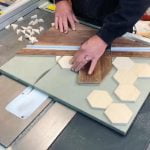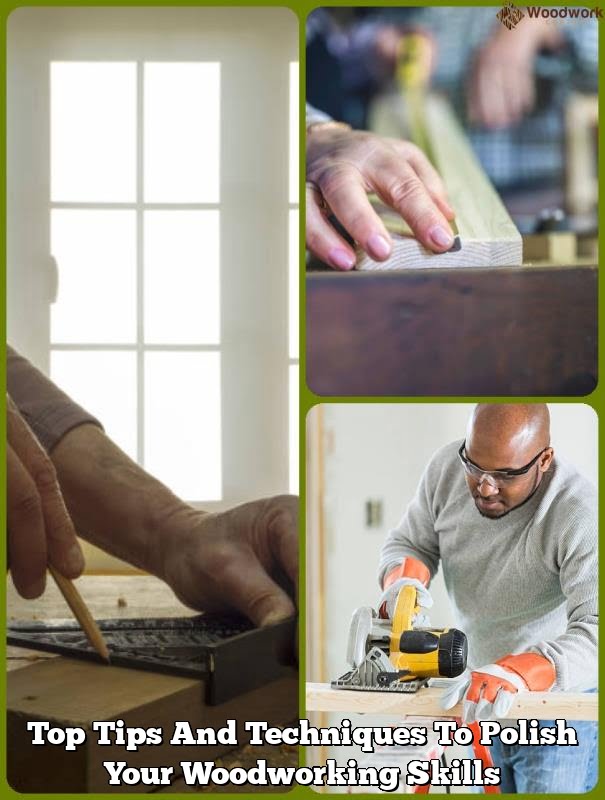Polishing old woodwork is a vital step in restoring the natural beauty and elegance of antique furniture and other wooden pieces. Over time, exposure to sunlight, dust, and moisture can dull the shine and cause damage to the surface of the wood. By properly polishing old woodwork, you not only enhance its appearance but also extend its lifespan.
Old woodwork possesses a unique charm that cannot be replicated in modern furniture. Each piece tells a story and carries with it years of history. However, neglecting proper maintenance can result in irreversible damage and deterioration. That is why understanding the importance of polishing old woodwork is essential for those seeking to preserve their heirlooms or bring new life to vintage finds.
Polishing old woodwork not only restores its original luster but also protects it from further wear and tear. Regular polishing creates a protective barrier over the surface, shielding it from harmful elements like moisture and UV rays. Additionally, by removing dust, dirt, and grime that accumulate over time, polishing helps maintain a clean and healthy environment for both wooden pieces and their owners.
In the following sections, we will explore how to identify different types of wood and finishes commonly found in old woodwork. We will then discuss how to prepare for the polishing process by gathering essential tools and materials needed for restoration.
From there, we will guide you through step-by-step instructions on assessing the condition of your old woodwork before diving into various techniques for effective cleaning, repairing damaged areas, removing stubborn stains, choosing appropriate polish products and techniques, as well as tips for maintaining polished old woodwork.
Join us on this journey as we revive the elegance of old woodwork by embracing its beauty through proper polishing techniques.
The Basics of Old Woodwork
Woodwork is a timeless feature that adds charm and elegance to any space. Before embarking on the journey of polishing old woodwork, it is essential to have a good understanding of the different types of wood and finishes commonly used in old furniture and architectural elements.
Identifying Different Types of Wood
One of the first steps in identifying old woodwork is recognizing the type of wood it is made from. Each type of wood has unique characteristics that can affect how it should be polished and restored. Some common types of wood used in old furniture and architectural elements include oak, mahogany, walnut, pine, and cherry.
- Oak: Known for its durability, oak has a distinct grain pattern with prominent markings that can often darken over time. It is crucial to take these factors into consideration when choosing the appropriate polish for oak woodwork.
- Mahogany: This hardwood is highly prized for its reddish-brown color and rich grain patterns. When dealing with mahogany woodwork, careful attention must be paid to preserving its natural beauty while restoring its shine.
- Walnut: Walnut wood has a warm brown tone with dark streaks, making it a popular choice for antique furniture. Polishing walnut requires techniques that enhance its unique characteristics without altering its natural appearance.
- Pine: Pine is a softwood known for its light color and often features knots and variations in texture. It requires special care during the polishing process to avoid damaging or over-saturating the wood.
- Cherry: Cherry woodwork tends to darken over time due to exposure to light. Understanding this characteristic allows for proper restoration techniques that bring out the rich red tones while maintaining its original luster.
Understanding Different Finishes
In addition to different types of wood, old woodwork can also have various finishes applied to protect and enhance their appearance. It is essential to identify the finish before attempting any polishing or restoration work.
- Varnish: Varnish is a durable and glossy finish commonly used on woodwork. It provides excellent protection but may require stripping or sanding to remove before applying a new polish.
- Shellac: Shellac is a traditional finish that creates a smooth, high-gloss surface. It can be identified by its warm amber tone and can typically be easily removed using denatured alcohol.
- Lacquer: Lacquer is a popular finish known for its durability and high sheen. It requires specialized techniques and products for proper restoration, such as gentle cleaning solvents and careful polishing.
- Wax: Wax finishes are commonly found in older furniture and architectural elements. They provide a soft, low-luster appearance but may need to be periodically reapplied to maintain their protective qualities.
By understanding the different types of wood and finishes used in old woodwork, you can make informed decisions about the best methods and products to use when polishing them. This knowledge will not only ensure effective restoration but also help preserve the natural beauty of these timeless pieces for years to come.
Preparing for the Polishing Process
Gathering the Essential Tools and Equipment
Before you begin the process of polishing old woodwork, it is important to gather all the necessary tools and materials. Having everything you need prepared beforehand will make the process smoother and more efficient. Here are some essential tools and equipment you will need:
- Cleaning Supplies: Start by gathering basic cleaning supplies such as a bucket, mild soap or wood cleaner, soft cloths, sponges, and a vacuum or a dusting brush. These will be used for removing dirt, dust, and grime from the woodwork before polishing.
- Sandpaper: Depending on the condition of the woodwork, you may need different grades of sandpaper. Coarse-grit sandpaper is useful for removing old finishes or paint, while finer grits are suitable for smoothing out rough surfaces.
- Wood Putty: If your woodwork has any visible scratches or dents, wood putty can be used to fill in these imperfections before polishing. Choose a putty color that closely matches the color of your woodwork.
- Stain or Finish Stripper: If your old woodwork has multiple layers of stain or finish that need to be removed, you will need a good-quality stain or finish stripper. Make sure to choose one that is safe for use on your specific type of wood.
- Applicators: For applying polish or other finishing products, gather lint-free cloths or brushes specifically designed for woodworking. Avoid using abrasive materials that could scratch the surface.
- Protective Gear: It is important to protect yourself during the polishing process. Wear gloves to prevent any chemicals from coming into contact with your skin and consider wearing safety goggles if you’ll be using potentially harmful chemical products.
Additional Optional Tools
Along with these essential tools, there are some additional optional tools that might come in handy depending on your specific situation:
- Power Tools: If you have a large surface area to polish or want to accelerate the process, power tools like orbital sanders or rotary polishers can be useful. However, use these tools with caution as they can damage the woodwork if not used properly.
- Wood Filler: In cases where your woodwork has deeper scratches or dents, wood filler can be used instead of putty. Wood filler is thicker and designed for larger repairs.
- Wax and Polishing Cloths: After the woodwork has been polished, waxing it can give it an extra layer of protection and enhance its shine. Apply the wax using a clean cotton cloth or a buffing pad specifically made for applying wax.
Remember to always read and follow the instructions provided by the manufacturers of all the tools and materials you will be using. With proper preparation and gathering of essential tools and equipment, you will be ready to begin the process of polishing your old woodwork effectively and efficiently.
Step-by-Step Guide
One of the first steps in polishing old woodwork is to assess the condition of the wood. This will help determine the extent of any damage and guide you in your restoration process. Here is a step-by-step guide on how to assess the condition of old woodwork:
- Step 1: Clean the surface – Before assessing the condition, it’s important to remove any dust or dirt from the woodwork. Use a soft cloth or brush to gently clean the surface.
- Step 2: Inspect for scratches and dents – Carefully examine the woodwork for any scratches or dents. Run your fingers along the surface to feel for imperfections that may need attention.
- Step 3: Check for water marks – Look out for water marks or white rings left by moisture. These can occur if glasses were left on top of wooden surfaces without coasters, causing damage to the finish.
- Step 4: Assess discoloration and stains – Examine the woodwork for any areas of discoloration or stubborn stains. This could include dark spots caused by spills or oil-based stains that have penetrated into the wood.
- Step 5: Evaluate structural integrity – Take note of any loose joints, cracks, or warping in the woodwork. These issues should be addressed before proceeding with polishing.
By thoroughly assessing the condition of your old woodwork, you will have a better understanding of what needs to be done in order to restore its beauty and luster. Keep track of all necessary repairs and any additional supplies needed before moving on to other steps in the polishing process.
| Condition | Action |
|---|---|
| Scratches and Dents | Address with appropriate repairs like filling with putty or sanding down |
| Water Marks | Use heat or a specialized product to remove the marks without damaging the wood |
| Discoloration and Stains | Treat with bleaching products or sanding down and refinishing |
| Structural Integrity | Repair any loose joints, cracks, or warping before proceeding with polishing |
Restoring the Shine
Restoring the shine of old woodwork is an essential step in polishing and reviving its elegance. Over time, dust, dirt, and grime can accumulate on the surface, making it appear dull and lackluster. Fortunately, there are effective techniques that can help you remove these unsightly elements and restore the natural shine of your woodwork.
Dusting
The first step in removing dust, dirt, and grime is to thoroughly dust the surface of the woodwork. Use a soft cloth or a feather duster to gently wipe away loose particles from all areas including corners and crevices. It is important to be gentle during this process to avoid scratching or damaging the wood.
Vacuuming
In addition to dusting, vacuuming can be a useful technique for removing deeply embedded dirt and grime from old woodwork. Attach a soft brush attachment to your vacuum cleaner and carefully run it over the surface of the woodwork. Make sure to use low suction power to prevent any potential damage.
Cleaning Solutions
For tougher stains and grime buildup, you may need to use cleaning solutions specifically designed for wood surfaces. Before applying any product, test it on a small inconspicuous area of the woodwork to ensure that it does not cause any discoloration or damage. You can then apply the cleaning solution using a soft cloth, following the manufacturer’s instructions carefully.
Natural Removers
Alternatively, if you prefer natural methods for removing dirt and grime from your old woodwork, there are several options available. One popular choice is a mixture of water and vinegar or lemon juice. Simply mix equal parts water and vinegar/lemon juice in a spray bottle and mist onto a soft cloth. Gently rub the cloth over the surface of the woodwork to remove dirt and grime.
By following these effective techniques, you can successfully remove dust, dirt, and grime from your old woodwork, restoring its shine and beauty. Remember to treat your woodwork with care throughout the process to avoid causing any damage.
Repairing Damaged Woodwork
Woodwork can often accumulate scratches, dents, and water marks over time. While these imperfections may detract from the overall beauty of old woodwork, they can be repaired with the right techniques. Here are some effective methods for addressing these types of damage:
- Scratches: To repair minor scratches on old woodwork, start by cleaning the affected area with a mild soap and water solution. Once dry, apply a small amount of paste wax or an appropriate wood stain marker that matches the color of the wood.
Gently rub the wax or stain into the scratch using a soft cloth until it is level with the surrounding surface. For deeper scratches, use fine-grit sandpaper to carefully sand away the damaged area and then follow the same steps as mentioned before. - Dents: Dents in woodwork can be quite unsightly but can often be easily fixed. Begin by moistening a clean cloth with hot water and placing it over the dent. Allow the cloth to sit for around 20 minutes to soften the fibers of the wood.
After removing the cloth, place a damp towel over the dent and use an iron set to medium-high heat to apply pressure on top for about 15-20 seconds. The heat will cause steam to be released from within the wood fibers and help raise them back up. Repeat this process as necessary until you achieve desired results. - Water Marks: Water marks or stains on old woodwork can be particularly stubborn to remove, but there are effective methods for tackling them. One common technique is to create a mixture by mixing equal parts of toothpaste or baking soda with non-gel toothpaste or baking soda until it forms a paste-like consistency.
Using a soft cloth, gently rub this paste onto the water mark in circular motions until it starts to fade away and then wipe off any residue with a clean cloth.
If the water mark persists, you can try using a mixture of equal parts vinegar and olive oil. Dab a small amount of this mixture onto a soft cloth and gently rub it onto the stain in circular motions until it disappears.
By following these methods, you can effectively repair scratches, dents, and water marks on old woodwork, restoring its beauty and charm. Remember to always test any products or techniques in an inconspicuous area before applying them to larger areas to avoid any potential damage.
Tackling Stubborn Stains
Woodwork can often develop stubborn stains, such as dark spots and discoloration, over time. These stains can be unsightly and detract from the overall beauty of the piece. However, with the right techniques and products, you can effectively remove these stains and restore the woodwork to its former glory.
Before attempting to remove stubborn stains, it is important to first assess the severity of the stain and the type of woodwork you are dealing with. Different types of wood may respond differently to stain removal techniques, so it is crucial to identify the specific type of wood you are working with. Additionally, certain finishes on the woodwork may require special attention when removing stains.
To remove dark spots and discoloration from your old woodwork, there are several effective techniques you can try. One common method is to use a mixture of equal parts vinegar and water. Apply this solution to a cloth or sponge and gently rub it onto the stained area. Be sure to follow the grain of the wood and avoid using excessive force that could damage the surface.
Another technique involves using a mild abrasive such as baking soda or toothpaste. Create a paste by mixing these abrasives with water, then apply it to the stained area using a soft cloth. Gently rub in circular motions until the stain begins to fade. Rinse with water and wipe dry.
In some cases, stubborn stains may require more specialized treatment. For instance, if your woodwork has been affected by water damage or mold growth, you may need to use a mold remover or bleach mixed with water. It is important to carefully follow instructions for any chemical products used and ensure proper ventilation when working with strong cleaners.
Overall, removing stubborn stains from old woodwork requires patience and careful attention to detail. By identifying your specific type of wood and finish, choosing appropriate stain removal techniques, and using the right products, you can effectively eliminate dark spots and discoloration, restoring the natural beauty of your old woodwork.
Applying the Perfect Polish
In order to achieve beautiful, polished old woodwork, it is crucial to choose the right products and techniques. The right polish can enhance the natural beauty of the wood and protect it from future damage. Here are some tips on how to choose the perfect polish for your old woodwork:
- Consider the type of wood: Different types of wood may require different polishes. For example, soft woods like pine may benefit from a wax-based polish, while hard woods like oak or mahogany may do well with an oil-based polish.
- Determine the existing finish: If you are unsure about the current finish on your old woodwork, it is important to identify whether it is oil-based or water-based. This will help you choose a compatible polish. Oil-based finishes often require an oil-based polish, while water-based finishes may need a water-based or non-silicone polish.
- Test in inconspicuous areas: Before applying any polish to your entire piece of old woodwork, always test it in a small, inconspicuous area first. This will allow you to check for any adverse reactions or changes in color before proceeding with the full application.
Once you have chosen the right product for your old woodwork, there are also techniques that can help you achieve optimal results:
- Apply thin layers: When applying polish to old woodwork, it is best to use thin layers rather than slathering on thick coats. Thin layers allow for better absorption into the wood and prevent excess buildup or streaking.
- Use gentle circular motions: To evenly distribute the polish and ensure thorough coverage, use gentle circular motions when applying. This helps to work the polish into the wood and achieve a smooth, polished finish.
- Buff for a final shine: After applying the polish and allowing it to dry according to the manufacturer’s instructions, use a soft cloth or a buffing pad to gently buff the surface of the woodwork. This will help bring out the shine and enhance the overall appearance of your old woodwork.
By carefully choosing the right products and implementing effective techniques, you can achieve a perfect polish for your old woodwork, enhancing its beauty and preserving its elegance for years to come. Remember to always follow manufacturer’s instructions and take proper precautions when working with polishes and other chemicals.
Maintaining the Shine
After investing time and effort into polishing your old woodwork, it is essential to know how to maintain its shine. Preserving and protecting polished old woodwork will not only prolong its life but also retain its elegant appearance. Here are some helpful tips to keep your polished woodwork looking beautiful for years to come:
- Dust Regularly: Dust can accumulate on the surface of polished woodwork, dulling its shine over time. To prevent this, make it a habit to dust your woodwork regularly using a soft cloth or a gentle feather duster. This simple step will help remove any particles that can scratch or damage the surface.
- Avoid Harsh Cleaning Agents: When cleaning polished old woodwork, it is crucial to use mild cleaning agents that are suitable for the specific type of finish on your woodwork. Harsh chemicals can strip away the polish and damage the wood. Instead, opt for pH-neutral cleaners or even homemade solutions like a mixture of water and vinegar.
- Moisturize with Natural Oils: To restore moisture and preserve the luster of polished old woodwork, consider using natural oils such as jojoba oil, linseed oil, or tung oil. These oils penetrate the surface of the wood, nourishing it from within while adding a protective layer that enhances its sheen.
- Use Furniture Wax or Polish: Applying furniture wax or polish regularly is an excellent way to protect and maintain polished old woodwork. These products provide a protective layer that helps repel dirt and moisture while enhancing shine. Be sure to choose a wax or polish specifically designed for use on wooden surfaces and follow the manufacturer’s instructions carefully.
- Avoid Sunlight Exposure: Direct sunlight can cause fading and damage to polished old woodwork over time. Therefore, it is essential to position your furniture away from windows or use curtains or blinds to block the harsh ultraviolet rays. If sunlight cannot be avoided, consider applying UV protective treatments or using window film to minimize its damaging effects.
By implementing these maintenance tips, you can prolong the lifespan and beauty of your polished old woodwork. Remember to be consistent in your efforts and perform regular maintenance to ensure that your woodwork continues to shine for years to come.
Frequently Asked Questions
In this section, we will answer some common questions that people often have about polishing old woodwork. Whether you are a homeowner looking to restore the beauty of your antique furniture or a DIY enthusiast interested in reviving neglected wood surfaces, these answers will provide valuable guidance.
1. Can I use regular household cleaners to polish old woodwork?
While regular household cleaning products may seem convenient, they are not ideal for polishing old woodwork. These cleaners can contain harsh chemicals that can damage the wood and strip away its natural finish. It is best to opt for specialized wood cleaners and polishes that are designed specifically for the purpose of restoring and maintaining wooden surfaces. These products are formulated to be gentle on the wood while effectively removing dirt and grime.
2. How often should I polish old woodwork?
The frequency of polishing old woodwork depends on various factors such as the condition of the wood, its usage, and environmental factors. As a general guideline, it is recommended to polish your old woodwork at least once or twice a year.
However, if you notice any signs of dullness, scratches, or wear and tear before that timeframe, it is advisable to give it a polish sooner. Regular maintenance will help preserve the beauty and longevity of your wooden furniture or surfaces.
3. Can I polish painted woodwork?
Polishing painted woodwork can be tricky because traditional polishes may not adhere well to the paint surface. Instead of using traditional polishes, there are specialized products available in the market that are suitable for painted wood surfaces. These products typically come in spray form and can help revive the shine of painted woodwork without causing any damage to the underlying paint layer.
| Question | Answer |
|---|---|
| 1. Can I use regular household cleaners to polish old woodwork? | No, it is best to opt for specialized wood cleaners and polishes that are designed specifically for the purpose of restoring and maintaining wooden surfaces. |
| 2. How often should I polish old woodwork? | As a general guideline, it is recommended to polish your old woodwork at least once or twice a year. However, if you notice any signs of dullness, scratches, or wear and tear before that timeframe, it is advisable to give it a polish sooner. |
| 3. Can I polish painted woodwork? | There are specialized products available in the market that are suitable for painted wood surfaces, which can help revive the shine without causing any damage to the underlying paint layer. |
Conclusion
Polishing old woodwork is like giving new life to a piece of history. By understanding the importance of polishing and taking the time to restore and maintain it properly, you can transform worn-out wood into a stunning display of elegance.
This guide has provided you with valuable information on identifying different types of wood and finishes, gathering essential tools and materials, assessing the condition of old woodwork, removing dirt and grime, repairing damaged areas, tackling stubborn stains, choosing the right products and techniques for polishing, and maintaining the shine over time. Now it’s time to embrace the beauty of polished old woodwork.
One of the most rewarding aspects of polishing old woodwork is witnessing its transformation. From dull and worn surfaces to a rich and lustrous shine, each step in this guide has been carefully designed to revive the elegance that vintage woodwork holds. By following these techniques, you can bring out the natural beauty and character of your furniture or architectural elements.
Remember that restoring and polishing old woodwork is more than just a cosmetic improvement-it also helps preserve its longevity. Proper maintenance will ensure that your polished pieces remain beautiful for years to come. Regular dusting, cleaning with gentle products, avoiding harsh chemicals or abrasive tools, applying protective coatings periodically-all these steps contribute to extending the lifespan of your beloved wooden possessions.
In conclusion, embracing polished old woodwork is an opportunity to honor craftsmanship from another era. It brings a touch of timeless beauty into your surroundings while preserving history for future generations.
By following this comprehensive guide and dedicating care to your treasured pieces, you can enjoy their elegance for many more years to come. So go ahead-restore that vintage dresser or bring back life to antique architectural elements; let polished old woodwork be a source of pride and admiration in your home or workspace.
Frequently Asked Questions
How do you make old wood look good again?
To make old wood look good again, start by cleaning the surface thoroughly. Use a soft cloth or sponge and mild soap mixed with water to gently remove dirt and grime. Once the wood is clean, you can assess if any repairs or touch-ups are needed. If there are scratches or gouges, use a wood filler to fill them in and sand it down until smooth.
Next, choose an appropriate wood stain or finish to bring back its natural color and protect the wood. Apply the chosen product evenly using a brush or cloth and allow it to dry completely before deciding if an additional coat is needed. Finally, polish the wood with a good quality furniture wax, applying it in circular motions until it shines.
How do you clean 100 year old wood trim?
Cleaning 100 year old wood trim requires utmost care to preserve its original beauty. Start by dusting the surface lightly using a soft-bristled brush or cloth to remove loose debris without scratching the delicate surface. Avoid using harsh chemicals that could potentially damage the aged wood; instead, opt for natural solutions like a mixture of white vinegar and water in equal parts.
Dampen a soft cloth with this solution and gently wipe down the trim, following the grain pattern of the wood. For areas with stubborn stains or grime buildup, you may need to use a slightly more abrasive technique such as lightly rubbing with very fine steel wool soaked in soapy water solution. Afterward, rinse thoroughly with a clean damp cloth and allow it to air dry completely before applying any necessary restoration products.
How do you clean 100 year old wood furniture?
Cleaning 100 year old wood furniture should be approached carefully to prevent damage while still effectively removing dirt and preserving its character. Begin by removing loose dust particles using a soft-bristled brush or vacuum cleaner fitted with a brush attachment. Following this initial step, create a cleaning solution by mixing mild dish soap with warm water in a bucket or basin. Gently dampen a soft cloth or sponge in this solution and wring out excess moisture to prevent oversaturation. Starting from the top and working downwards, wipe the surfaces of the furniture in smooth, even strokes, following the direction of the wood grain.
Pay extra attention to intricate details or carvings where dirt may accumulate. Rinse your cloth frequently to avoid redistributing grime. Once completed, wipe down with a clean damp cloth to remove any residue and dry it thoroughly using a soft towel. Ensure the furniture is completely dry before applying a suitable wax or oil-based conditioner to restore moisture and enhance its natural luster.

Hi everyone! I’m a woodworker and blogger, and this is my woodworking blog. In my blog, I share tips and tricks for woodworkers of all skill levels, as well as project ideas that you can try yourself.





